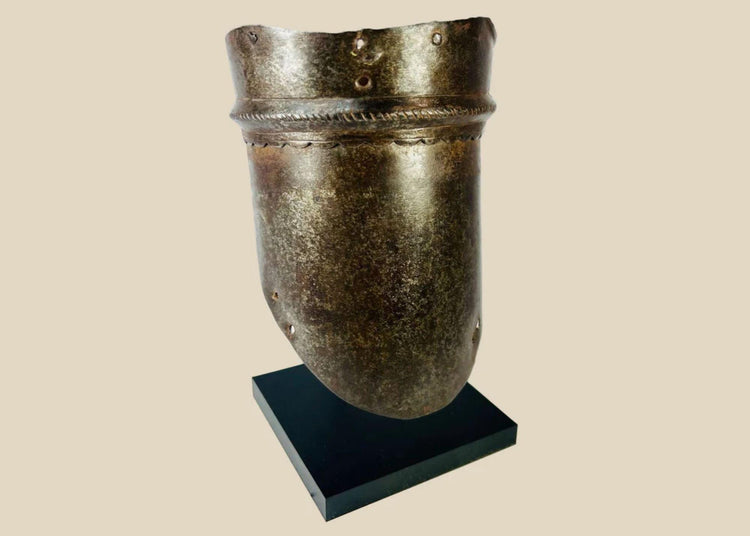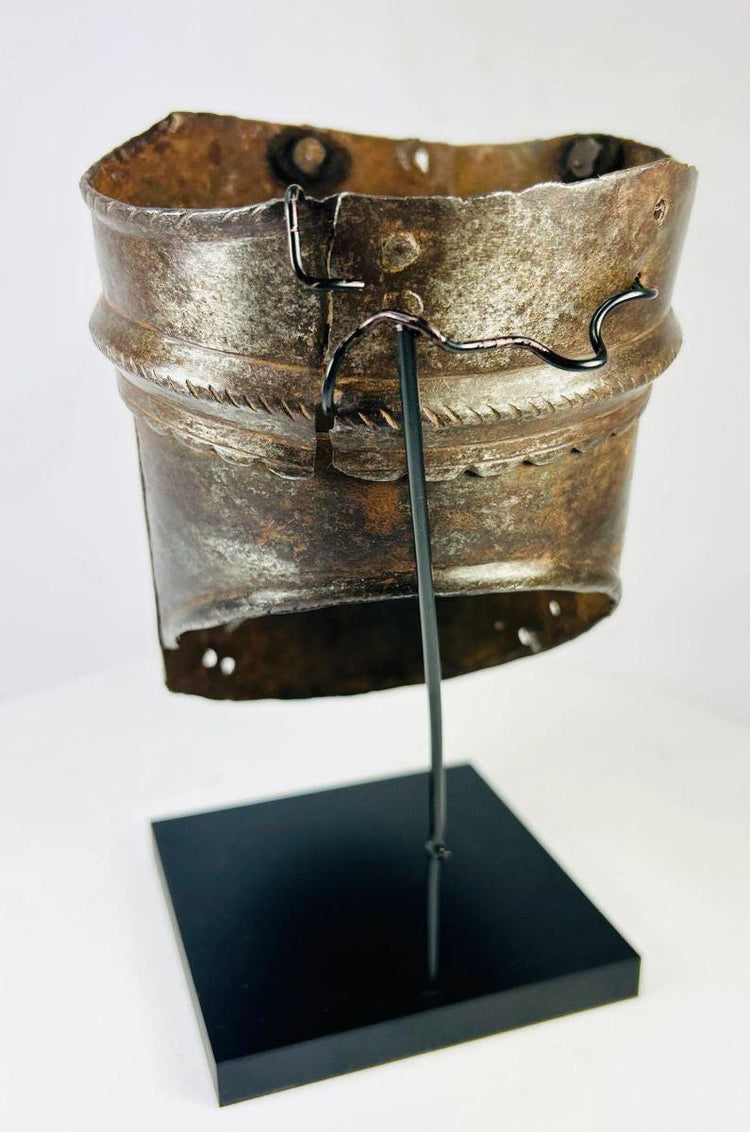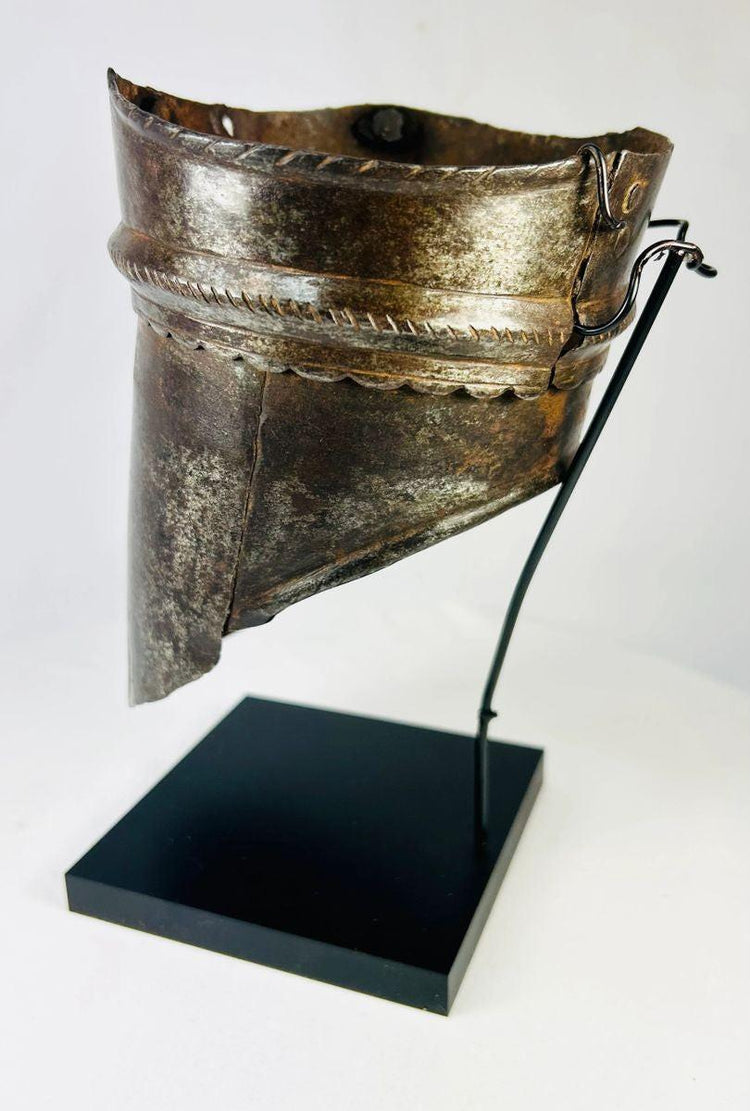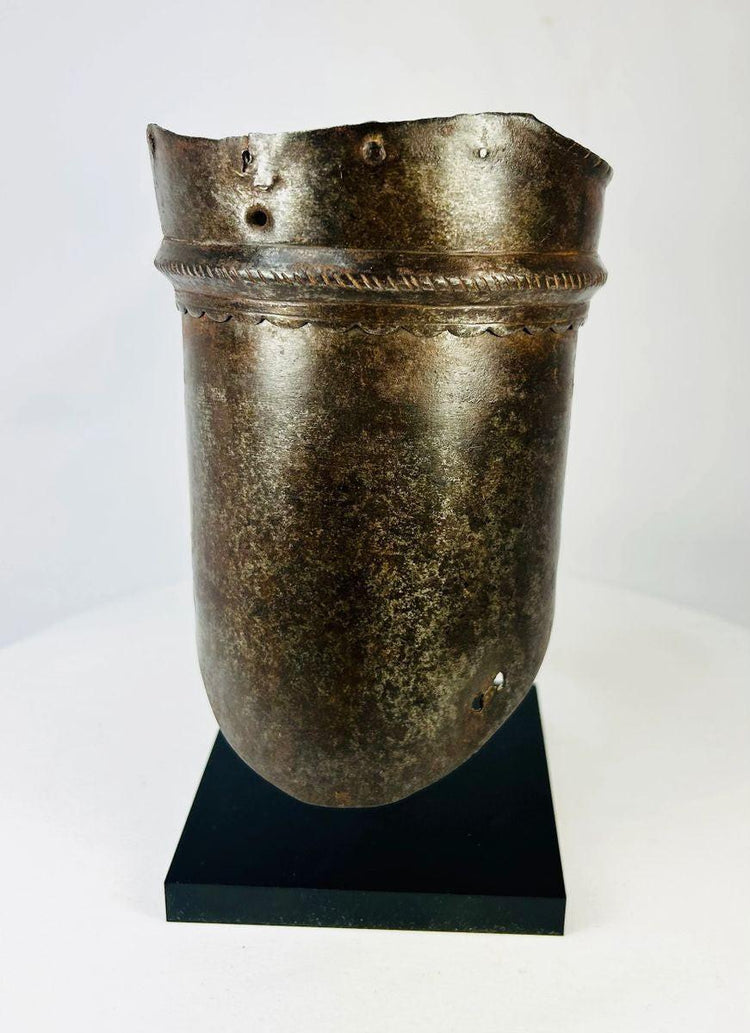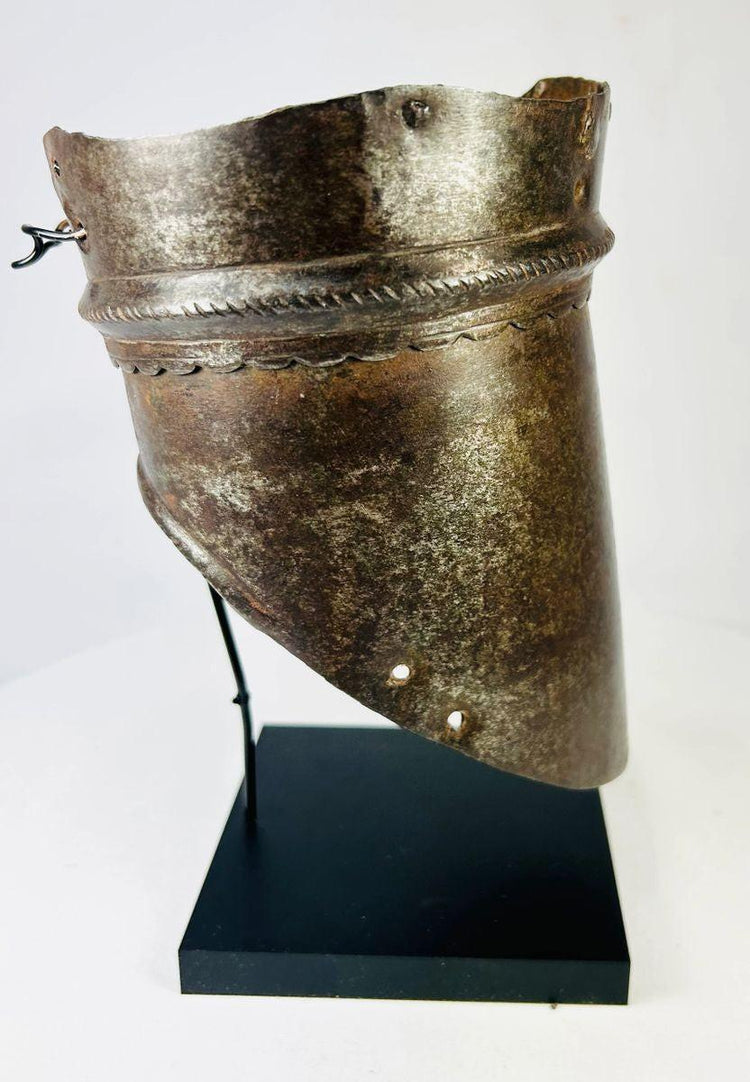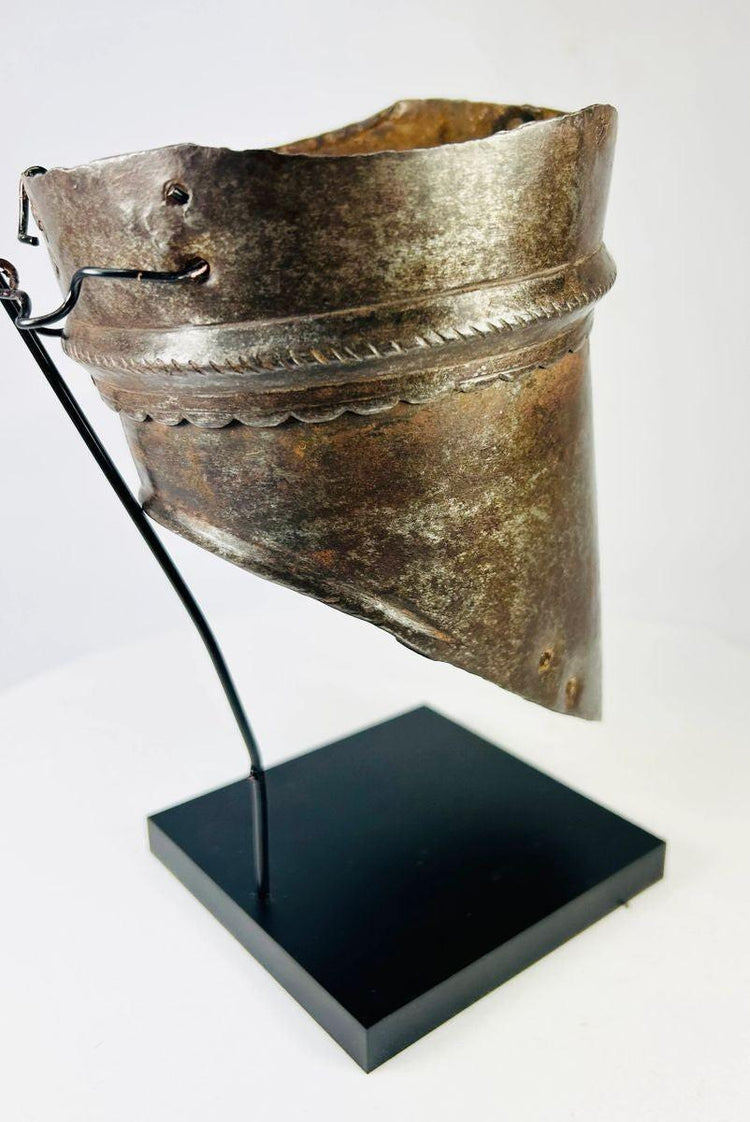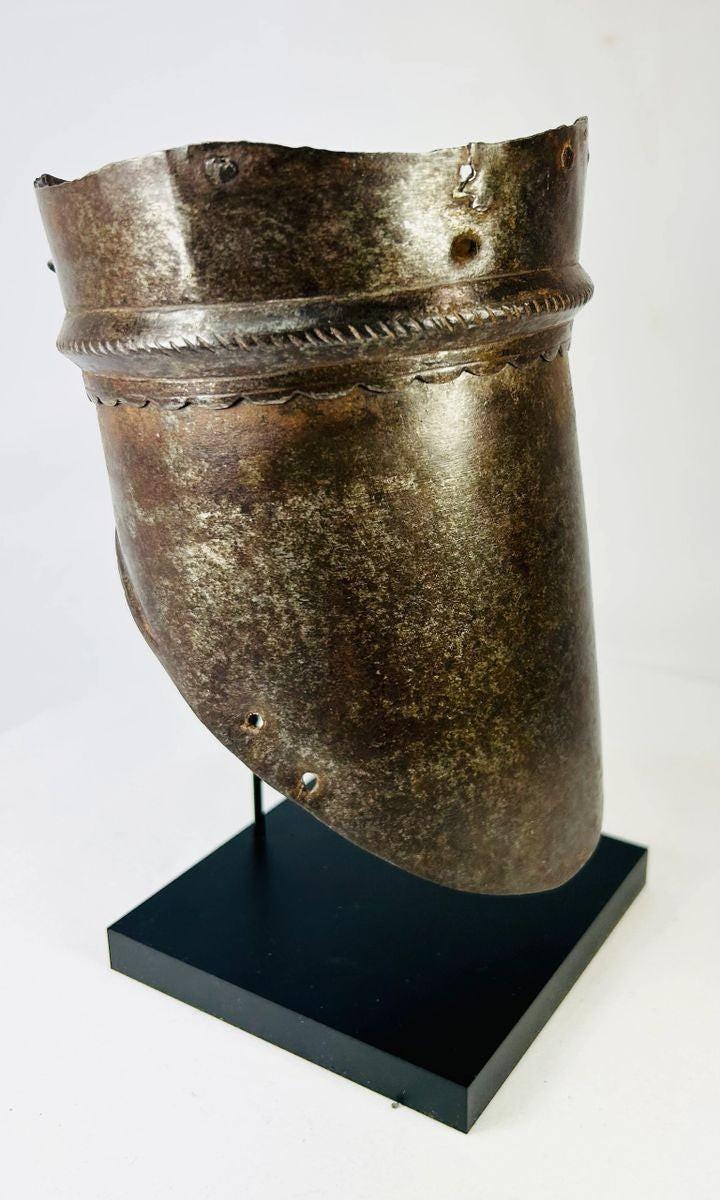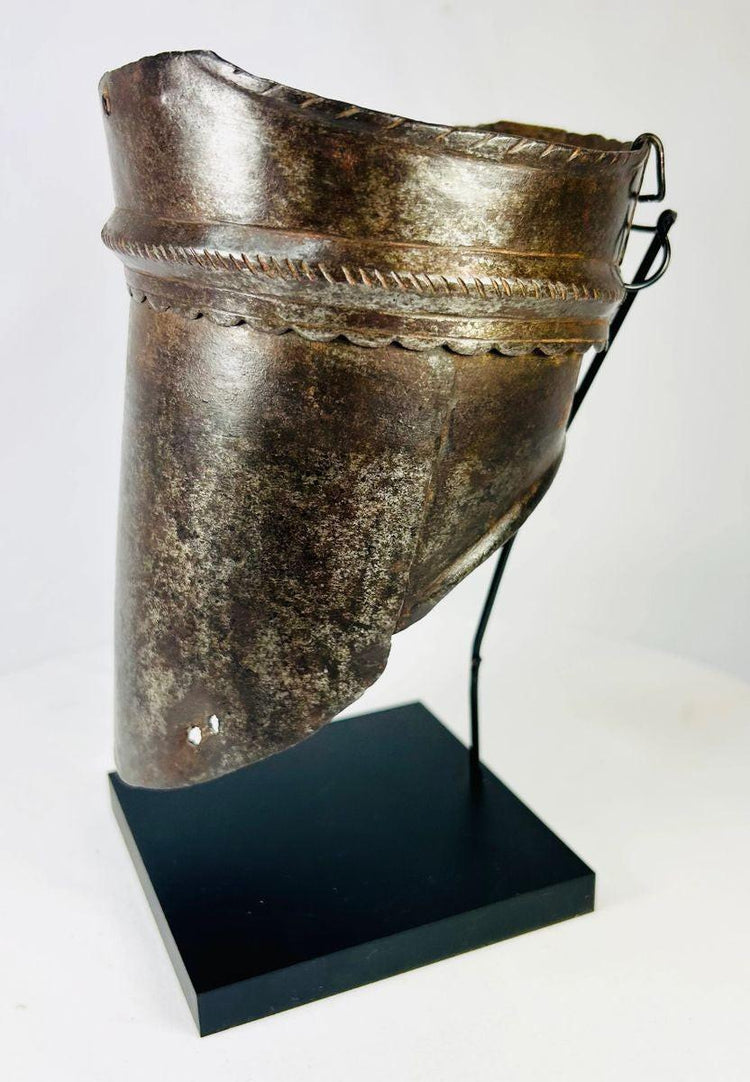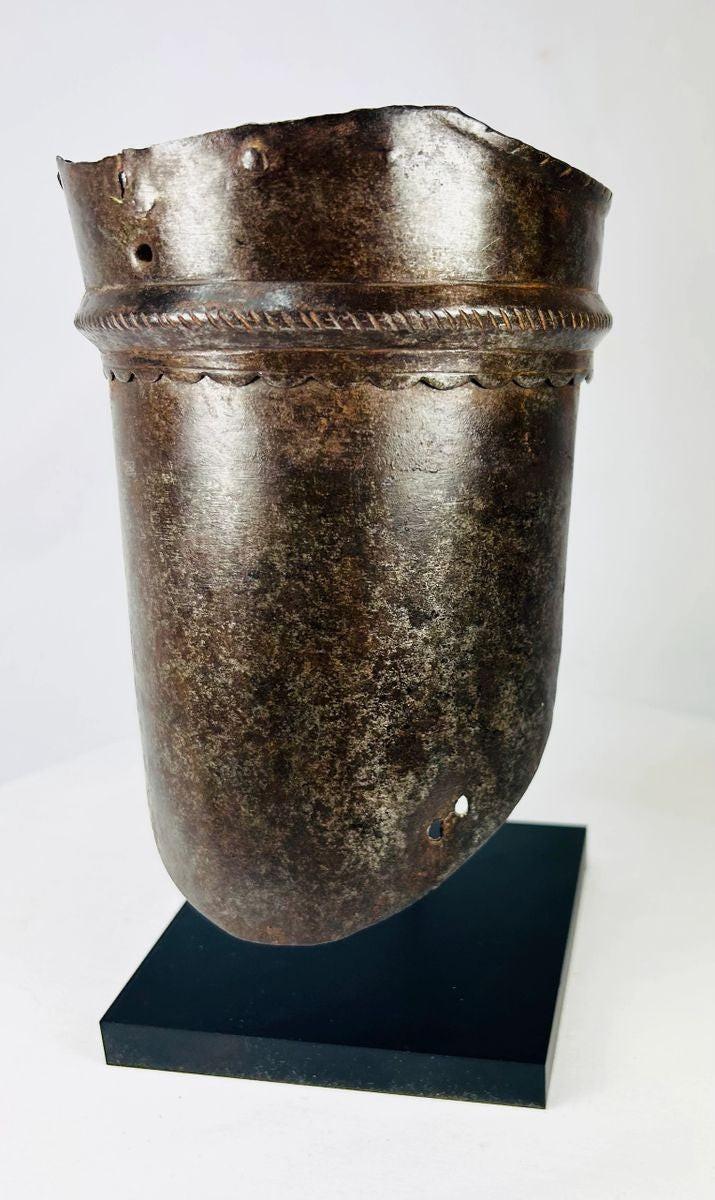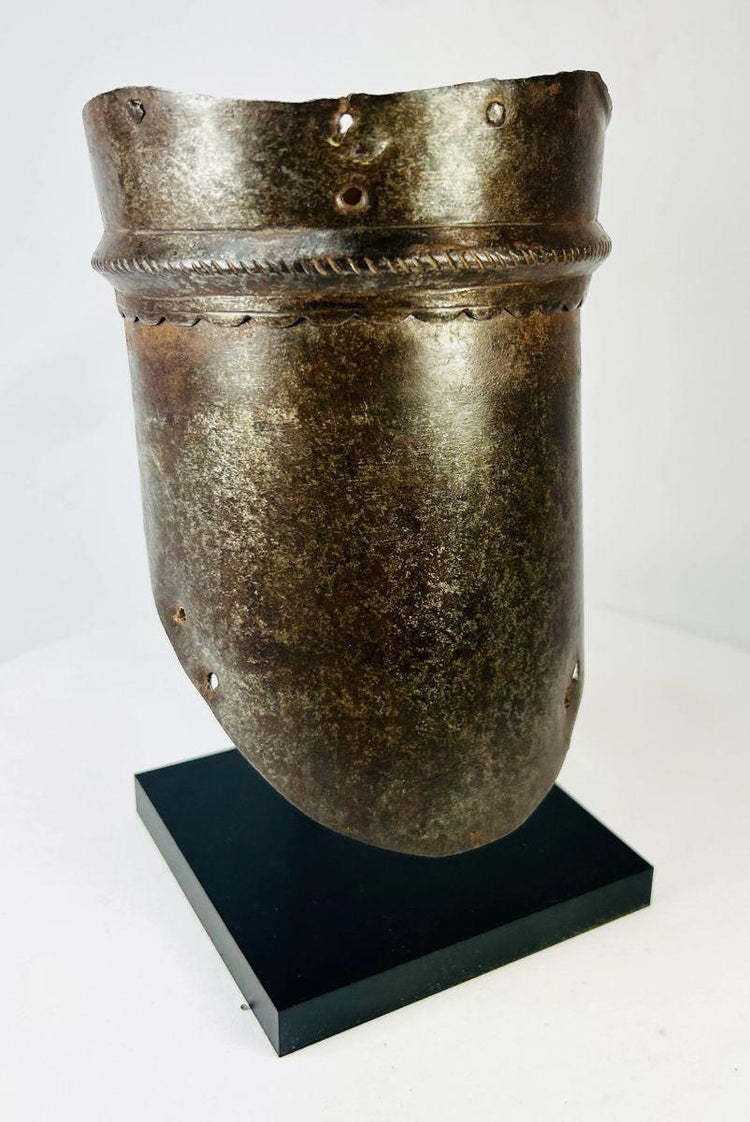European Upper Arm Armor Cannon-Style with Scalloped Edge | Circa 16th Century
Description
More
Less
Historical Context & Origin
Region: Western Europe
Material: Forged steel with ornamental incisions
Period: 16th Century
Description
This finely crafted upper arm defense is a remarkable example of Renaissance-era armory, dating to the 16th century—a period when armor served as both battlefield protection and a powerful symbol of prestige. Designed as part of a larger suit, this cylindrical defense piece safeguarded the wearer’s upper arm while offering flexibility and mobility in combat. Its scalloped edges, incised mid-band detailing, and robust construction embody the fusion of artistry and functionality that defined Renaissance armor-making. Such pieces would have been worn by knights, noble warriors, or military leaders, reflecting both martial readiness and elevated social rank.
Features
- Cylindrical steel construction providing upper arm protection
- Scalloped outer rim edges, characteristic of Renaissance design
- Incised ornamental band highlighting craftsmanship and status
- Rivet holes and perforations indicating attachment to a full suit of armor
- Durable steel composition balancing defense and decorative artistry
Cultural & Symbolic Significance
Armor in the Renaissance era was more than utilitarian; it was an expression of wealth, power, and artistry. This upper arm defense illustrates the dual purpose of such equipment: to provide essential protection on the battlefield and to project the prestige of its wearer. The decorative elements suggest ownership by an individual of high rank, reinforcing armor’s role as both functional protection and cultural statement.
Condition
The surface bears a natural aged patina with areas of light corrosion, consistent with its centuries-old history. Subtle weathering and imperfections add authenticity while preserving its historical essence. Despite age-related wear, the piece remains structurally sound, with rivet holes and perforations intact, further affirming its original role as part of a complete suit of Renaissance armor.
Dimensions (approximate)
Length: 5 in
Age
Approximately 450–500 years old
Description
Historical Context & Origin
Region: Western Europe
Material: Forged steel with ornamental incisions
Period: 16th Century
Description
This finely crafted upper arm defense is a remarkable example of Renaissance-era armory, dating to the 16th century—a period when armor served as both battlefield protection and a powerful symbol of prestige. Designed as part of a larger suit, this cylindrical defense piece safeguarded the wearer’s upper arm while offering flexibility and mobility in combat. Its scalloped edges, incised mid-band detailing, and robust construction embody the fusion of artistry and functionality that defined Renaissance armor-making. Such pieces would have been worn by knights, noble warriors, or military leaders, reflecting both martial readiness and elevated social rank.
Features
- Cylindrical steel construction providing upper arm protection
- Scalloped outer rim edges, characteristic of Renaissance design
- Incised ornamental band highlighting craftsmanship and status
- Rivet holes and perforations indicating attachment to a full suit of armor
- Durable steel composition balancing defense and decorative artistry
Cultural & Symbolic Significance
Armor in the Renaissance era was more than utilitarian; it was an expression of wealth, power, and artistry. This upper arm defense illustrates the dual purpose of such equipment: to provide essential protection on the battlefield and to project the prestige of its wearer. The decorative elements suggest ownership by an individual of high rank, reinforcing armor’s role as both functional protection and cultural statement.
Condition
The surface bears a natural aged patina with areas of light corrosion, consistent with its centuries-old history. Subtle weathering and imperfections add authenticity while preserving its historical essence. Despite age-related wear, the piece remains structurally sound, with rivet holes and perforations intact, further affirming its original role as part of a complete suit of Renaissance armor.
Dimensions (approximate)
Length: 5 in
Age
Approximately 450–500 years old
You May Also Like


























